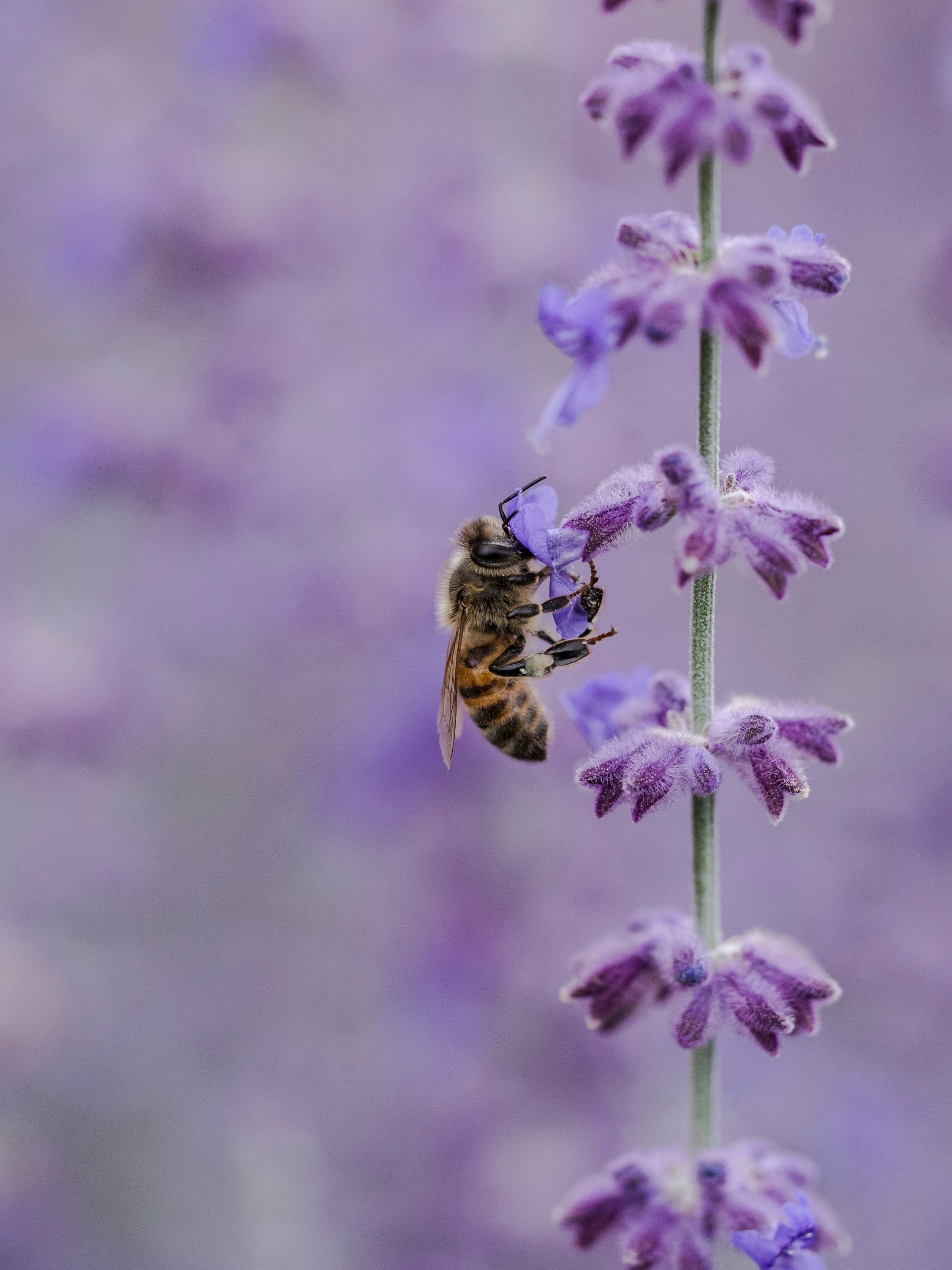Table of Contents
![]()
Introduction
Bees are integral to many ecosystems, serving as crucial pollinators for a vast array of plants. While there are over 20,000 known bee species worldwide, including honeybees, bumblebees, and solitary bees, their collective role extends far beyond their familiar buzz. Understanding their ecological importance provides insight into their impact on biodiversity, agriculture, and human well-being.
Ecological Roles of Bees
Pollination
Pollination is a fundamental ecological process where pollen is transferred from one flower to another, enabling plants to reproduce. Bees are pivotal in this process due to their foraging behavior. As bees collect nectar and pollen from flowers, they inadvertently transfer pollen between plants, facilitating fertilization. This activity not only helps plants reproduce but also enhances genetic diversity within plant populations.
Certain plants rely exclusively on bees for pollination. For example, crops such as apples, berries, and cucumbers are heavily dependent on bee activity. Additionally, bees pollinate a variety of wildflowers and native plants, which are essential for maintaining ecosystem balance and providing habitat for other wildlife.
Biodiversity and Ecosystem Health
Bees contribute to maintaining plant diversity, which is crucial for ecosystem stability. By pollinating a wide range of plants, bees help sustain diverse plant communities. This diversity supports various levels of the food web, including other pollinators, herbivores, and predators. The presence of diverse plant species attracts different pollinators and wildlife, fostering a complex and resilient ecosystem.
Moreover, healthy bee populations indirectly support soil health. Plants that receive adequate pollination grow more robustly and contribute organic matter to the soil. This, in turn, improves soil fertility and structure, which benefits other plants and organisms within the ecosystem.
Economic and Agricultural Impact
Crop Pollination Services
The economic value of bee pollination is substantial. Bees contribute to the pollination of approximately 75% of flowering plants and about 35% of global food crops. This translates into billions of dollars annually for agriculture. Crops like almonds, blueberries, and melons are particularly dependent on bee pollination, with the economic stakes being high.
Honey Production
Bees also produce honey, a product with significant economic and cultural value. Beyond honey, bees produce other valuable products such as beeswax, propolis, and royal jelly, which have various uses in cosmetics, medicine, and industry. The honey industry alone supports thousands of jobs and contributes to local economies.
Implications for Food Security
The decline in bee populations has serious implications for food security. A decrease in bee activity can lead to lower crop yields and reduced diversity in the food supply. This issue affects not only agricultural economies but also global nutrition and food availability.
Threats to Bee Populations
Habitat Loss
One of the primary threats to bee populations is habitat loss. Urbanization, deforestation, and agricultural expansion reduce the availability of wild habitats and floral resources. Intensive farming practices can also create environments that are inhospitable to bees.
Pesticides
Pesticides, particularly neonicotinoids, have been shown to adversely affect bee health. These chemicals can impair bees’ foraging abilities, navigation, and reproduction. The widespread use of pesticides poses a significant risk to bee populations and, by extension, to the ecosystems they support.
Disease and Parasites
Bees are susceptible to various diseases and parasites. The Varroa destructor mite, for example, is a major pest that affects honeybee colonies, leading to colony collapse. Other pathogens, such as Nosema and various viruses, also contribute to bee population declines.
Climate Change
Climate change impacts bees by altering floral availability and the timing of flowering. Changes in temperature and precipitation patterns can disrupt the synchronization between bee activity and plant blooming periods. This misalignment can lead to reduced foraging opportunities and lower survival rates for bees.
Conservation Efforts
Habitat Restoration and Protection
Efforts to conserve bee populations often involve habitat restoration and protection. Creating bee-friendly environments, such as planting wildflowers and native plants, can provide essential resources for bees. Preserving natural habitats and establishing pollinator corridors also contribute to the health of bee populations.
Sustainable Agricultural Practices
Adopting sustainable agricultural practices can mitigate some of the threats to bees. Reducing pesticide use, especially harmful neonicotinoids, and incorporating pollinator-friendly crops can create safer environments for bees. Crop rotation and integrated pest management are also strategies that support bee health.
Public Awareness and Education
Raising public awareness about the importance of bees and how to support them is crucial. Individuals can contribute by planting bee-friendly plants, avoiding pesticide use, and supporting local beekeepers. Educational campaigns and community initiatives can enhance understanding and foster a culture of conservation.
Research and Policy
Ongoing research into bee health and conservation is essential for developing effective strategies to protect bees. Policy measures, such as regulations on pesticide use and habitat conservation incentives, play a critical role in addressing the challenges faced by bee populations.
Case Studies
Successful Bee Conservation Projects
One example of a successful conservation project is the restoration of bee habitats through the creation of pollinator-friendly gardens and wildflower meadows. These initiatives have led to increased bee populations and improved local biodiversity.
Impact of Bee Decline on Specific Ecosystems
Regional case studies highlight the effects of bee decline on ecosystems. In regions where bee populations have declined significantly, there have been observable impacts on plant diversity and agricultural productivity. These case studies provide valuable lessons for developing conservation strategies and understanding the broader implications of bee population declines.
Conclusion
Bees play an indispensable role in ecosystems, contributing to pollination, biodiversity, and soil health. Their economic impact is also profound, affecting agriculture and food security. Despite the numerous benefits bees provide, they face significant threats from habitat loss, pesticides, diseases, and climate change. Addressing these challenges through conservation efforts, sustainable practices, and public awareness is essential for safeguarding bee populations and, by extension, the health of our ecosystems. It is imperative that individuals, communities, and policymakers work together to ensure the continued survival and thriving of these vital insects.
Share This





Be the first to comment